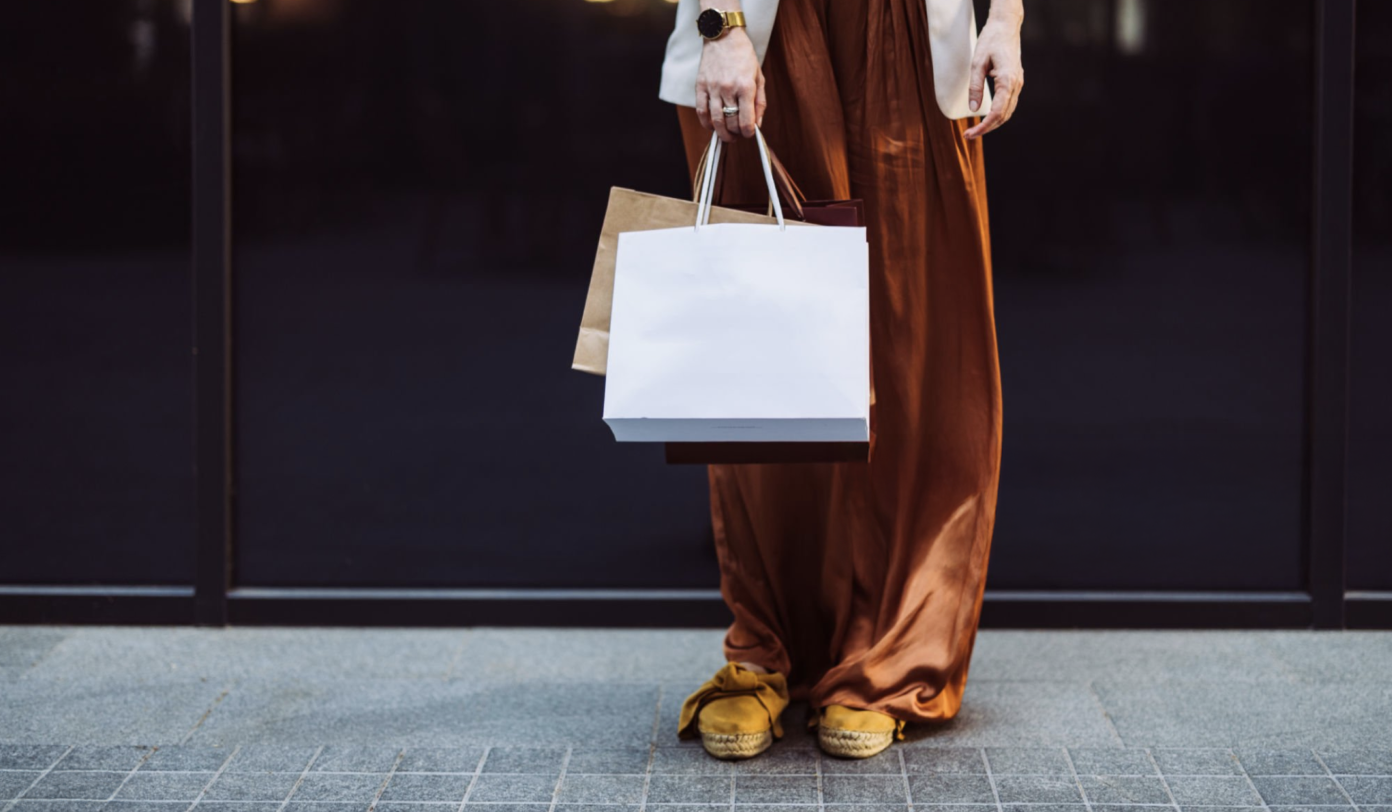As November rolls around, the Black Friday and Cyber Monday buzz begins to build. For many, it’s the opportunity to snap up a great deal on coveted items. For the organized among us, it’s time to get a headstart on holiday shopping.
And even with the cost of living crisis still impacting many markets, it’s not all bad news for brands – our data shows many consumers are still planning on spending big come November 24th as they seek out the best Black Friday deals.
So what can brands expect from Black Friday in 2023, and how can they use it to drive success across marketing, product, and business strategies? Let’s delve into the key Black Friday trends and retail statistics you need to know.
Top black Friday trends in 2023 to check out:
- Younger audiences are feeling spendier – Brands should tailor their Black Friday ad messaging to engage with younger shoppers. Social media campaigns and being influencer-driven are likely to capture their attention.
- Embrace the “lipstick effect” – Consumers are shifting towards affordable indulgences this Black Friday season, so messaging around mood-boosting treats at a reduced price is likely to hit home.
- Online sales will be big, but optimizing omnichannel shopping is key – Ensure a seamless shopping experience wherever and however consumers choose to shop. Consumers have diverse preferences and meeting their expectations across all channels is important.
- Promote leisure and homeware gifts – Leisure and home furnishings will be top gift choices this season, and brands should emphasize the value and quality of these items, as shoppers will be looking for ways to make their money go further.
- Craft sensitive and transparent messaging – It’s been a rough few years and the cost of living crisis has hit many consumers hard. Brands that are transparent in their messaging and prioritize value-driven communication with consumers are likely to inspire their loyalty.
Now let’s dig a little deeper into each of these Black Friday trends to understand the consumer behavior driving them.
1. For younger consumers, Black Friday deals are where it’s at
First off, in 11 markets Gen Z stand out for planning to buy all, most, or some of their winter holiday presents during Black Friday sales, while Gen X and baby boomers are more inclined to skip the event. For brands looking to increase discoverability and retail sales with younger generations, social media is the place to be as Gen Z rely less on search engines when looking for new products.

Gen Z are also the generation most likely to be planning on spending more this year than they did in 2022 – almost half say this, with millennials not far behind. Despite their lower income, this makes some sense in context; with two-thirds of Gen Z living with their parents, they’re optimistic about their finances, and more confident about spending. No wonder the Black Friday sale is so appealing.
There’ll always be consumers who don’t initially plan to snap up deals on Black Friday, but end up being tempted by discounts as the event draws near. We know that different generations impulse buy for different reasons, and younger consumers’ standout reasons typically revolve around social media (like using a “buy” button), or getting recommendations from influencers and celebrities. Brands should implement these learnings into their Black Friday campaign strategy if they want to win big with these consumers.
2. Play into the “lipstick effect”
The ongoing cost of living crisis is still impacting how people shop, but we’ve known since January that consumers still expect to spend more on occasions like the winter holidays. This could be because consumers expect higher prices this year, but it also serves as a reminder that consumers may not behave in the way brands expect.
Times of hardship also dictate what people buy. Looking at Black Friday trends in 2023, fewer consumers in the UK, US, and Canada plan to make luxury purchases than they did last year, but are looking to splurge on personal care items. This behavior aligns with the “lipstick effect”, the idea that during times of economic instability, consumers cut back on higher-priced luxury items in favor of smaller indulgent treats. Just the kind of thing you can snap up in online sales.
That’s the case in 11 markets too; fashion and personal care items are top-of-mind, while luxury items are much less of a priority.

Shoppers may feel they can’t afford or justify luxury purchases right now, but are still tempted by affordable indulgences to cheer themselves up. Even more so if these carry Black Friday discounts.
Brands should try to resonate with Black Friday shoppers who may be cutting back on luxury purchases, but are still seeking small, mood-boosting treats at a reduced price.
3. It’s not all about online sales, physical stores remain relevant
Almost 1 in 5 consumers in the UK, US, and Canada plan to do their Black Friday shopping exclusively online, marking an 8% increase since last year. But it’s not all bad news for the high street; many headed back to stores last year, and almost a third say they’ll do an equal mix of in-store and online shopping this year.
It may come as a surprise, but Gen Z are the generation most likely to shop in-store on Black Friday this year, with 40% planning to shop mostly or exclusively in-person.
For online sale shoppers, free delivery is huge, and we get an even clearer view of this in the US where free shipping is the top priority among over 8 in 10 online shoppers. It’ll be a busy time of year for returns and deliveries, so online shoppers want this experience to be as smooth as possible. Every retailer needs to manage both ends of the purchase process effectively, leaning on other delivery services where they can.
In the US, consumers who shop in-store expect an experience that’s as smooth and seamless as it would be online, so ensuring product availability and maintaining clean and organized stores over Black Friday weekend is essential. With rising covid cases and flu season underway in many markets, stores should also consider people’s safety, and take steps to help them feel comfortable.
A bit of festive cheer may bring baby boomers into stores – in the US they’re 59% more likely than the average consumer to enjoy listening to holiday season music, so businesses who can create festive in-store experiences may have a higher chance of attracting these consumers and boosting holiday shopping retail sales.
It’s key for brands to remember there’ll always be consumers who prefer online shopping, while others will prefer more traditional shopping methods. That’s why nailing the omnichannel experience is crucial.
4. Leisure and homeware products are the top planned gifts this year
People will buy things for many reasons this holiday shopping season, but what are they buying for others?
Consumers who plan to only shop for themselves this Black Friday stand out for having their eyes on new tech, whether it’s a new smartphone or a smart device. They’re also tempted by a luxury purchase for themselves; a recurrent sign that, even in times of hardship, consumers aren’t completely writing off big-ticket items.
Consumers who plan to only buy gifts, on the other hand, lean more toward home furnishings and leisure or entertainment products.

The world’s been a stressful place over the last few years, and the holiday season can only make matters worse for those who are really struggling. In response, gift-givers are likely eyeing up products to help their loved ones unwind and de-stress.
With many stretching their budgets this year, home furnishings can be a cost-effective present that lasts for an extended period, making them valuable for both giver and recipient. Brands should embrace this type of messaging for more targeted advertising, by emphasizing how shoppers can push their money further.
Black Friday ad messages around quality are also important. Cost is undoubtedly a factor but not every business can afford to slash their prices, so it’s important not to underestimate the significance of quality. In the US, quality is the top factor when shopping for essential household products, fit and comfort are key factors for clothing shoppers, and skincare enthusiasts say keeping skin moisturized is their top priority.
So how do you nail your Black Friday marketing? Whether you’re a small business or a big retailer, it’s all about finding ways to give consumers more value for their money, and brands who emphasize these qualities won’t find themselves in a race to the bottom.
5. Consumers expect transparent messaging this holiday season
Over 3 in 5 planning to celebrate the holidays say the rising consumer prices will have a big impact on their spending during the winter holidays this year. For brands, it’s not so much the fact this is happening, but more how they communicate it to their customers.
In the UK last year, popular retailers John Lewis, Tesco, and Lidl paired back their Christmas adverts and focused more on themes of sentimentality and kindness. These themes are still important this year.
In terms of messaging, most consumers expect ads to be informative by providing product information, but they’re also calling for transparency from brands. In the unsettled times we live in, some prices will go up, and brands should be upfront about that. Consumers don’t want any embellishment; they want a concise, value-driven story to help them understand why.
Companies need to give customers time to process this news and open up a dialogue; around 6 in 10 people want to be notified of a price increase at least one month before it happens.
The lesson here is that while cost is important, sensitive communication and discussing quality and value matter more to consumers.
Your 2024 commerce report
Check it out





.webp?width=495&height=317&name=pink_thumb_graphs%20(1).webp)
.webp?width=495&height=317&name=pink_thumb_letter%20(2).webp)
